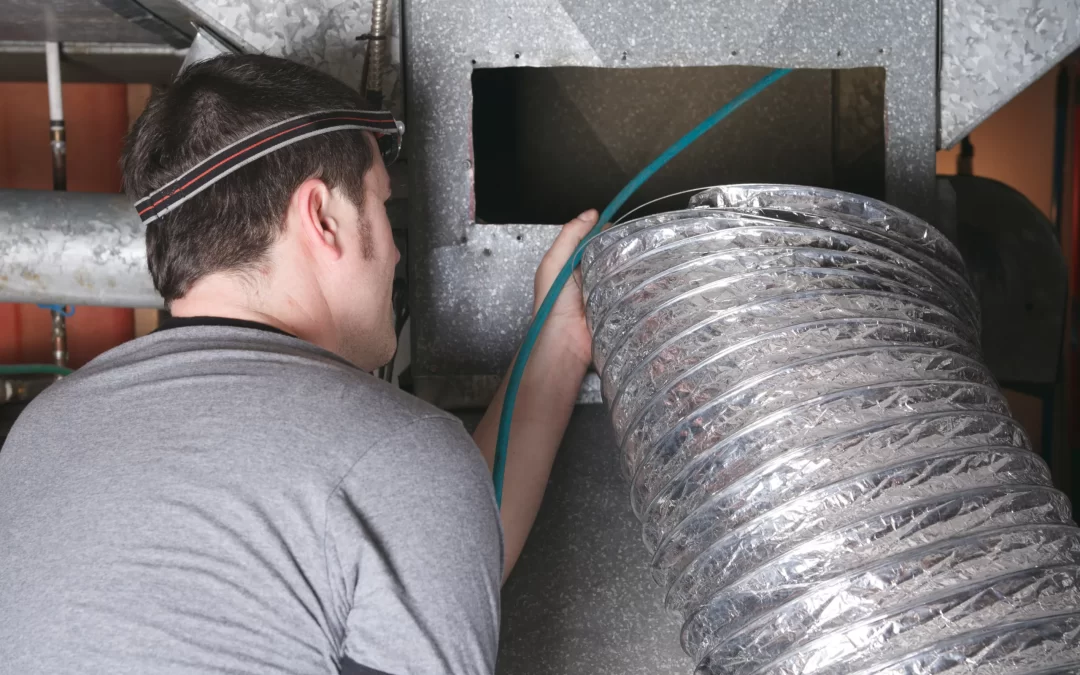1. Accessibility Challenges:
Attics, basements, crawl spaces, and cavities within walls are common locations for ductwork installation. Due to its concealed location, inspecting and repairing the ducting requires a significant amount of manual labor. It can be physically demanding and time-consuming for technicians to navigate narrow, confined locations.
- Labor Intensive: Repairing ductwork in these inconveniently located places calls for a lot of physical work. The time and effort needed to get access may increase if technicians are required to remove portions of the ceiling or walls.
- Special Equipment: To access and fix ductwork in these tight places, specialized equipment and tools are usually required. For instance, robotic devices can be utilized for cleaning and repairs in inaccessible regions, and flexible rods equipped with cameras (borescopes) are utilized for inspection.
- Safety Concerns: There are several safety risks when working in crawl spaces or attics, including the possibility of falling, coming into contact with insulation, and running into wildlife. Strict safety precautions are required due to these conditions, which drives up labor expenses.
2. Material Costs:
The repair cost is greatly affected by the materials used in ducting systems, which include ducts, insulation, sealing materials, and fasteners. To make sure the system lasts and works well, high-quality materials are needed.
- Superior Ducts: Galvanized steel, aluminium, and pliable plastic are among the materials used to create ducts. Although they are more expensive, high-quality metal ducts last a long time.
- Insulation: Preventing energy loss and maintaining system performance is absolutely dependent on proper insulation. Insulation materials, particularly those with a high R-value (thermal resistance) and fire resistance, can become expensive rather rapidly.
- Sealing Materials: Mastic sealant and foil-backed tape are examples of specialized sealing materials used to create airtight seals and avoid leaks. Although these products work, they are pricey and need careful application.
3. Complexity of Repairs:
A building’s ductwork system is a network of interconnected pipes and fittings. Problems with these systems are notoriously difficult to diagnose and fix because they involve a web of interdependent parts.
- In-Depth Diagnosis: Thorough diagnostics are necessary for pinpointing the precise location and type of the issue. It may be a costly and time-consuming struggle for technicians to employ sophisticated diagnostic equipment to find systemic problems including leaks, obstructions, and damage.
- Multiple Issues: Ductwork repairs are frequently more extensive than just fixing one issue. For example, a leak could be a sign of more serious problems like mold or structural damage that require immediate attention.
- Precision Repairs: The integrity and operation of the system depend on the accuracy of the ductwork repairs. The arrangement and configuration of the ductwork must be carefully considered when making repairs, which can be a tedious and intricate process.
3. Adherence to Rules and Regulations:
Repairs to ductwork must adhere to all applicable local, state, and federal requirements for the sake of public health, safety, and the environment. Repairs may become more complicated and expensive as a result of having to adhere to these standards.
- Building Codes: Local building codes specify the minimum and maximum allowable temperatures for ducting, insulation, and ventilation during installation and repair. Additional materials and careful work are typically required to meet the criteria set by these laws.
- Inspections and permissions: Getting the necessary permissions and passing inspections by the local authorities are often necessary steps in repairing ducting. Scheduling inspections and obtaining necessary licenses can add time and money to the repair process.
- Environmental Regulations: Ductwork repair procedures and materials can be impacted by environmental rules that aim to reduce energy consumption and minimize environmental effect. Insulation and sealing materials that are good for the environment can be more expensive.
5. Skilled Labor:
Technicians with the necessary expertise and training are essential when it comes to repairing ducting. Professionals with the knowledge to identify and fix ducting issues are in high demand.
- Training and Certification: In order to fix ductwork, technicians require certain training and certification. While this specific training guarantees that they are well-versed in the most recent methods, equipment, and safety standards, it does result in increased labor expenses.
- Experience: Technicians with more experience tend to charge more for their services because of their superior ability to identify problems and complete repairs quickly. Due to the intricacy of ducting systems, repairs should only be performed by trained professionals. Untrained individuals may not be able to meet the necessary standards.
- Ongoing Education: HVAC rules and technology are always changing. The cost of skilled labor is further increased since technicians are required to participate in continual education in order to remain current with industry norms and advances.
FAQs:
-
What Are The Possible Drawbacks Of VRF Systems?
Although VRF systems have numerous advantages, they may also have significant disadvantages. Because of the advanced technology and extensive installation needed for a VRF system, the initial investment may be greater than that of a conventional HVAC system. Installation and maintenance of VRF systems necessitate the expertise of trained professionals due to the complex technology and control systems involved. Problems with performance could arise from improper sizing or poor installation.
-
Is the Cost of Installing a VRF System High?
A variable refrigerant flow (VRF) system may have a greater price tag than a standard HVAC system, but it usually pays for it in the long run. Lower utility bills may be a result of the increased energy efficiency of VRF systems. Installation costs can be somewhat mitigated by the ability to retrofit into existing buildings and the reduced demand for ductwork. Total cost of ownership decreases over time due to energy savings and decreased maintenance expenses.


